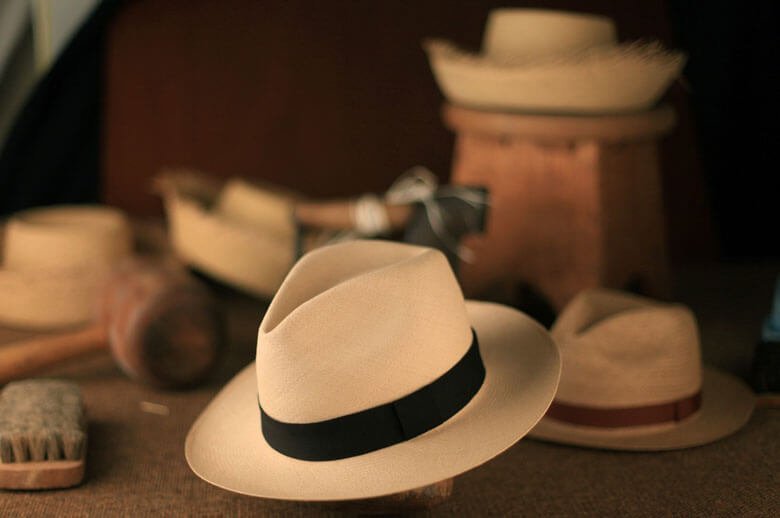The Panama Hat Journey
Expertly hand-woven from the palm-like grass Carludovica palmata, the Panama hat is a quintessential British summer fashion staple. In this article, we'll explore the history and craftsmanship behind this timeless classic.
The Panama Hat's Origins
The style dates back to 1906 when Edward VII rejected formal morning dress to attend Glorious Goodwood. He chose instead to wear a linen suit topped with a fine Panama hat.
In the late 18th century, botanists from the Royal Gardens in Madrid named Carludovica palmata after King Carlos IV of Spain and his wife, Ludovica. This was the only plant named after a woman (in part), of 150 new species presented in Europe at that time.
Panama Hat Production
Hat-weaving as a cottage industry began to evolve on the coast of Ecuador from the early 1600s. Montecristi and Jipijapa, the two villages where weavers worked, gave their names to the hats produced there. Hats woven in Bécal in Mexico are also known as Jipijapas. Renowned for their fine weave and the weavers' legendary skills, Montecristo Panama hats are still highly prized today. Rumours abound that master weavers work only by the light of the moon or when the sky is overcast!

In the 1830s, the authorities in Cuenca opened a hat factory to ease economic problems. Later, they set up a training workshop for those willing to learn the craft. The industry quickly became one of the most profitable economic activities in the region.
Preserving Traditional Hat Making
Pachacuti has been working since 1992 to preserve and encourage traditional hat weaving skills in Ecuador. We aim to ensure the Panama hat remains a fashion icon for many years to come by making sure weavers receive fair pay, promoting sustainability, and training new generations in weaving techniques.

In 2012, UNESCO added the art of weaving a Panama hat in Ecuador to their list of Intangible Cultural Heritage. This term signifies the knowledge, traditions, and rituals that permeate the everyday life of a community. Generations pass skills down to their descendants, forming an innate part of their identity and culture.
Challenges Facing the Industry
Despite our best efforts and the UNESCO designation, the continued exploitation of weavers by middlemen means that this timeless skill is under threat. We have heard desperately sad stories of our weavers' children paying human traffickers (coyotes). They face a dangerous journey through Central America and Mexico, across the border to the US – lured by the American dream. Others are abandoning tradition and rural skills for a new life in the city. Meanwhile, the market floods with cheap imitation Panama hats that are made from paper or other fibers. They don't have the flexibility and durability, or the centuries of heritage, of a true Panama hat from Ecuador.
Conclusion
Panama hat weaving is more than an art. It is more than a skill. It is a way of life, representing the cultural heritage of entire communities in Ecuador, from the heights of the Sierra to coastal villages. We hope that by preserving traditional hat making, we can enable men and women to remain within their rural communities, keeping families together, passing on their culture and traditions. We are still waiting for the definitive answer to this question.


